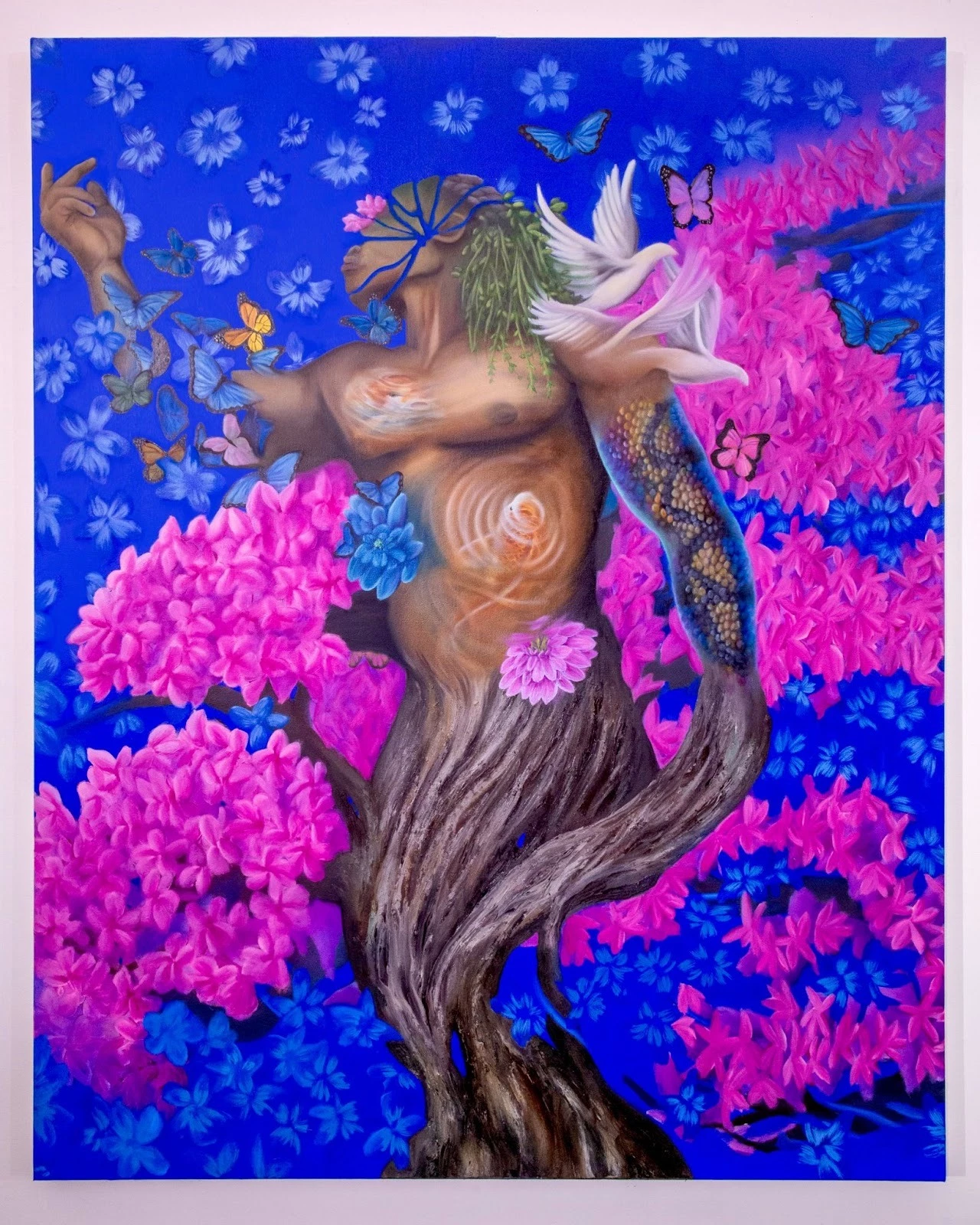
Tell us more about the inspiration behind your project.
The foundation is rooted in W.E.B. Du Bois’ “double consciousness” concept. It refers to a psychological state of feeling two separate identities, where one is constantly aware of how others perceive them, particularly through the lens of racial prejudice, while also struggling to harmonize this perception with their own self-understanding.
What most surprised you once you started working on the project?
What surprised me the most was how much this project felt 100% authentic to me. Suffering from my own symptoms of the “double consciousness” concept, I had placed a metaphorical veil over parts of myself to protect myself from the world. But I never realized how that had translated into my work. However, working through this project felt like I was finally giving myself permission to lift that veil, making these works feel genuinely me.
What was a highlight of living and studying in New York City?
The highlight was definitely the community building and accessibility.
What is something you learned at SVA that you’ll always take with you?
A gallery does not determine my career, shows, collectors, critics, or anything in between. I am the one who decides who I will be and what my career will look like.
Was there a teacher or course that was essential for you?
Yes, my mentors Rico Gatson and Sharon Louden, as well as professors such as Matthew Deleget, Franklin Boyd, Media Farzin, William Powhida, and the list goes on. These individuals had an enormous positive impact on my work and myself as a person.
What was your favorite piece of advice that an instructor or student shared with you?
My favorite piece of advice was shared with my class during our first semester at SVA by our chair, Mark Tribe. He told us that there are many art worlds out there. You decide which you want to be a part of and what kind of artist you want to be.
What advice do you have for next year’s students going through your program?
Living and studying in New York City is such an excellent opportunity. If you can, expose yourself to everything you can in the program and the city. Reach out to professors you want to work with, take a Continuing Ed class, and try to see as many shows as possible. But whatever you do, please do not go through the program passively. Actively create opportunities for yourself, and build a community you want to be a part of.
For this year’s SVA Alumni Scholarship Awards, 92 thesis or portfolio projects out of hundreds of applications were granted scholarships worth $63,000 for dozens of art and multimedia projects. To see a list of the 2025 recipients, click here.
To contribute to the Support the Talent campaign, you can donate online at sva.edu/give.
